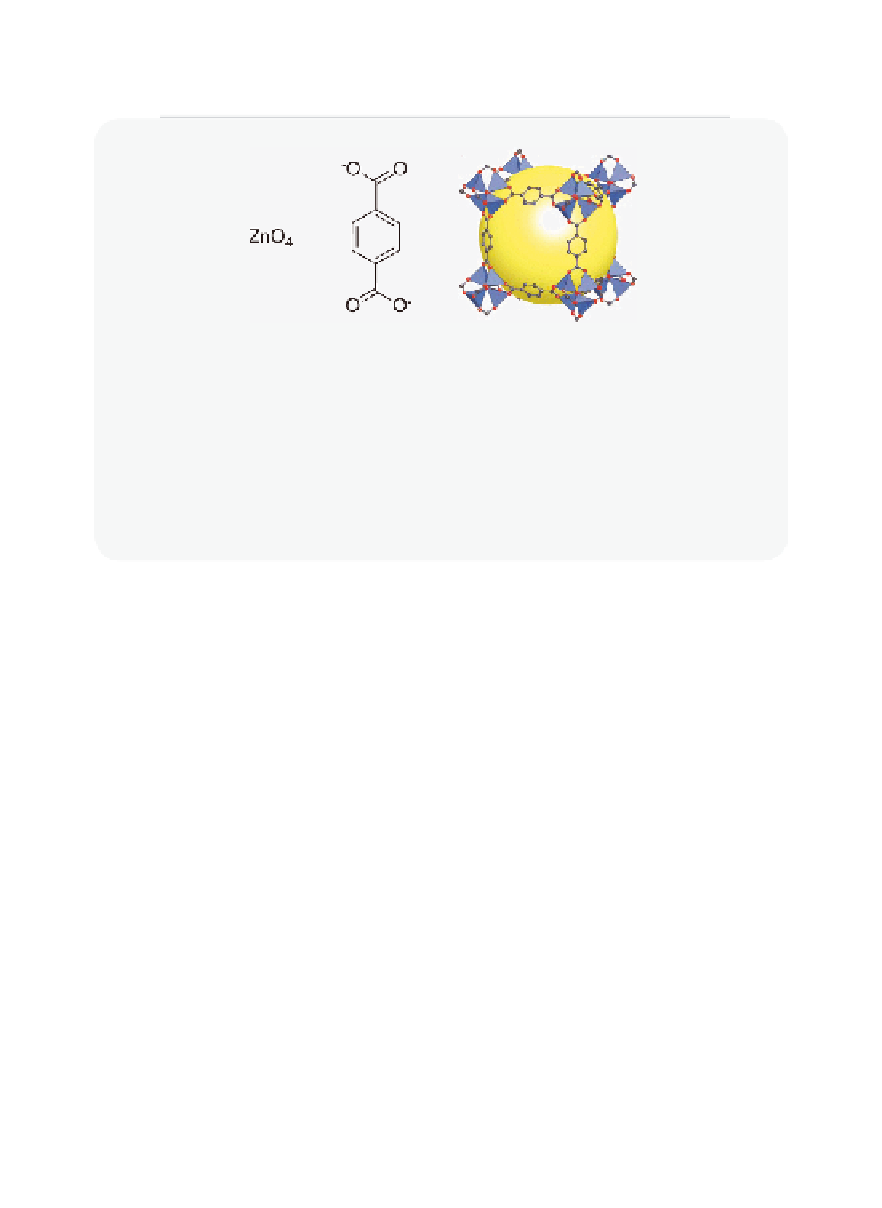Environmental Engineering Reference
In-Depth Information
Figure 6.1.3
A metal organic framework (MOF-5)
The MOF-5 structure: this material is synthesized from the metal-containing cluster
ZnO
4
with benzene dicarboxylate as the linker. The MOF-5 structure is shown as ZnO
4
tetrahedra (blue) joined by the linker (O, red, and C, black) to give an extended 3D cubic
framework with interconnected pores of 8 Å aperture width and 12 Å pore diameter. The
yellow sphere represents the largest sphere that can occupy the pores without coming
within the van der Waals radius of the atoms in the framework.
Figures reproduced from
Li et al.
[6.2],
with permission from Macmillan Publishers.
Section 2
Adsorption processes
Fixed bed adsorption
Adsorption is a unit operation that can be done in a couple of different
ways. The most common and easiest to think about is the so-called fi xed
bed, shown in
Figure 6.2.1
. In this system, a fl ue gas enters and fl ows
onto a bed of solid material, which selectively adsorbs CO
2
. The gas that
exits the system is nearly pure N
2
, and the CO
2
is retained on the bed.
This process can continue until the bed is saturated, at which point CO
2
will “break through” and show up in the exhaust. At that point of satura-
tion
the bed needs to be regenerated, which is accomplished by running
the process in reverse. This can be done by either increasing the
temperature or by decreasing the partial pressure of CO
2
, for example,
by introducing a purge gas. The nearly pure CO
2
will then be recovered.












Search WWH ::

Custom Search